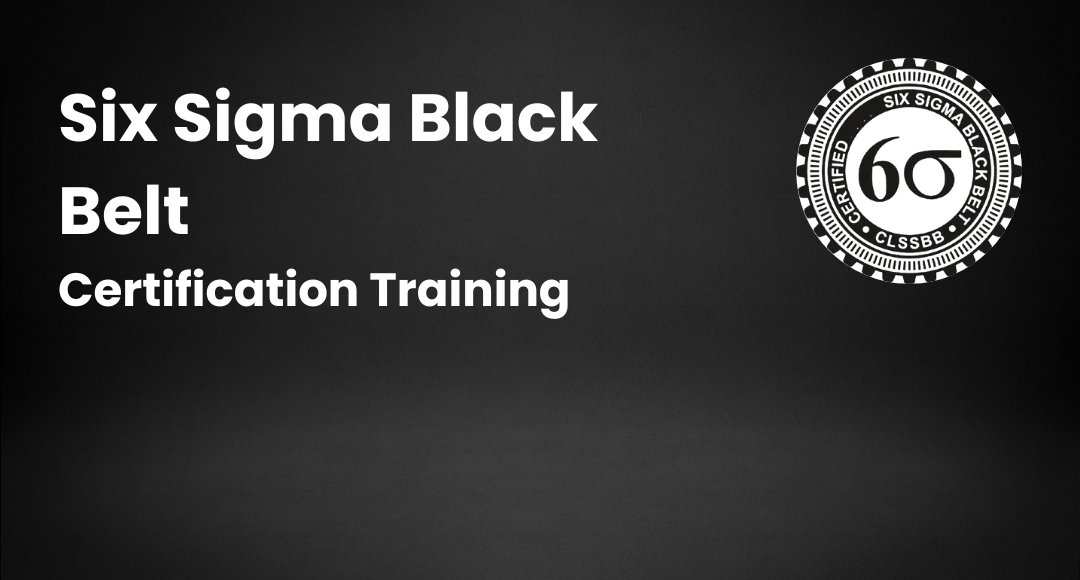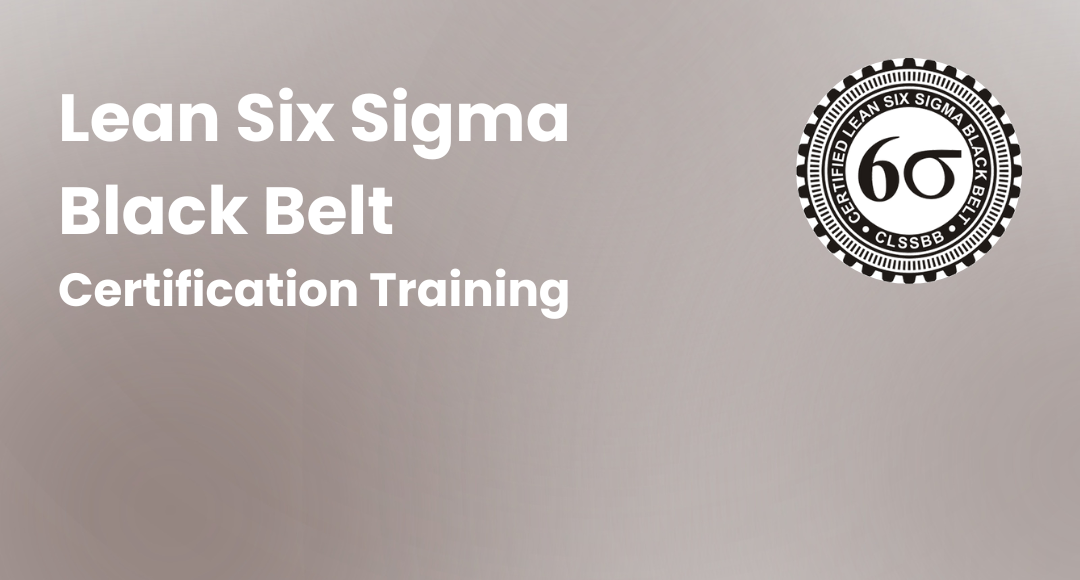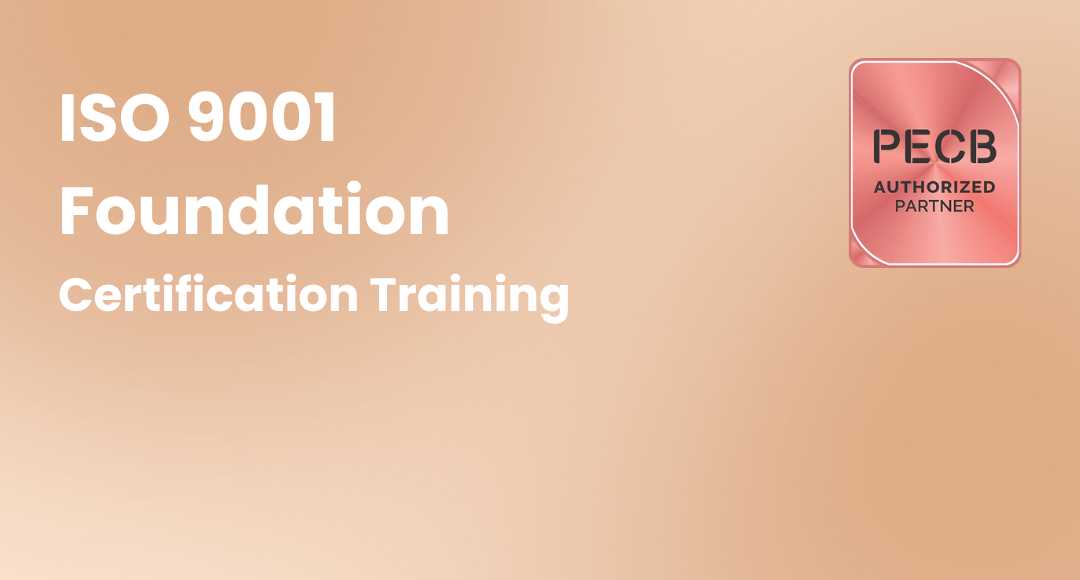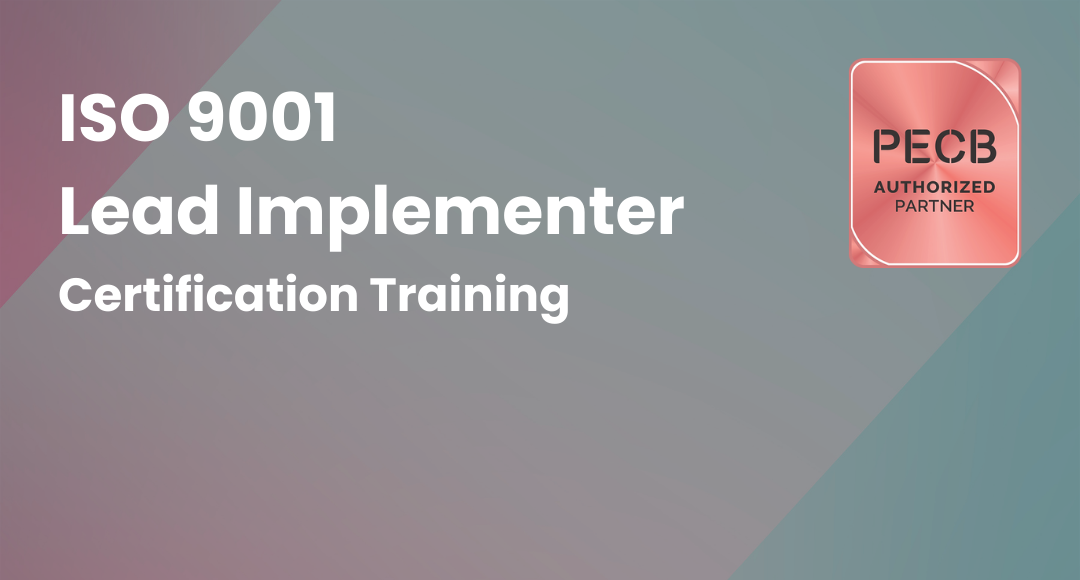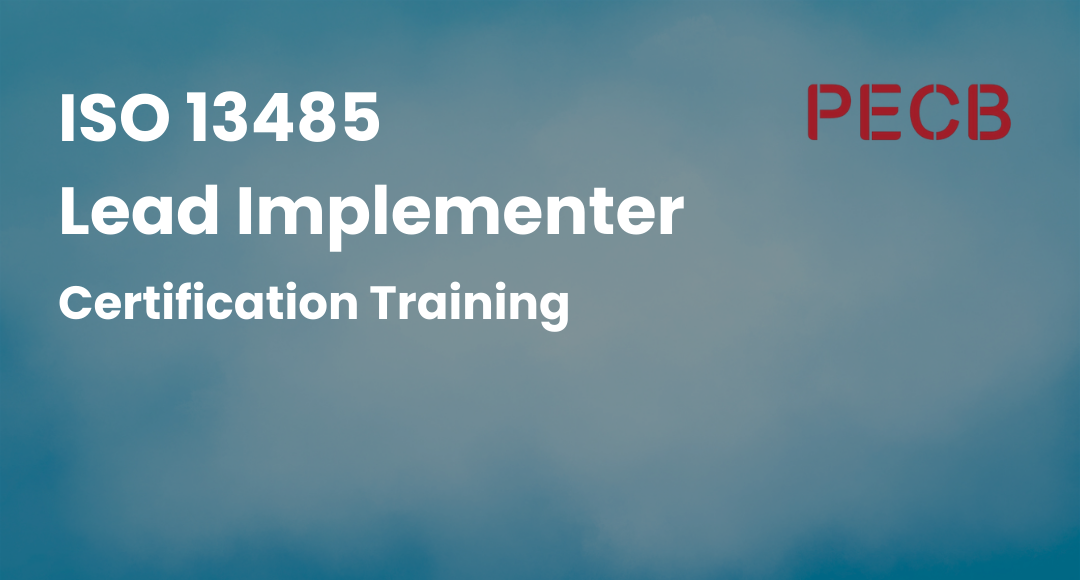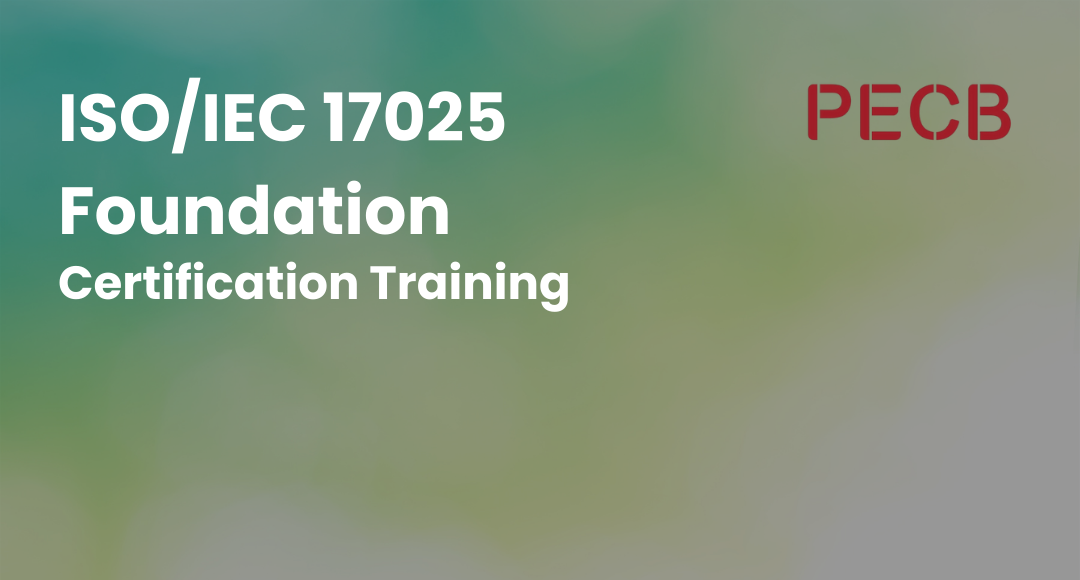Quality Assurance vs Quality Control

Table of Contents
Difference between Quality Control and Quality Assurance
Be it product-based or service-based, Quality management plays a crucial role for every organization. Practicing skills like Total Quality Management, Project Quality Management, and Quality control helps organizations maintain the quality of their service to customers.
The success of any project, product, or service largely depends on customers’ satisfaction. Customers are only satisfied when organizations are able to provide high-quality products and services that meet their needs.
Adopting effective quality systems can help organizations cater to the quality needs of their customers.
To adapt and establish a prudent quality management system, the key professionals of the organizations, project managers, and other authorities should clearly understand the quality systems. Moreover, understanding the distinctions between quality control and assurance is vital for effectively implementing these processes and achieving consistent excellence.
Quality Assurance vs Quality Control
Most of the time, professionals and practitioners involved in project or program management lack an understanding of the difference between Quality control and Quality assurance.
This ambiguity in the concepts may further pose problems and can have a negative effect on activities; hence, it has become important to know the differences between QA and QC.
We focus on eliminating just that in our article: QA vs QC (Quality Assurance vs. Quality Control).
There are always four major constraints in a project that every project manager uses as a yardstick to check the credibility of the project. These four constraints are cost, time, scope, and quality.
In these 4 constraints, quality plays a major role because, as an experienced project manager, even if you complete the project within the given time, scope, and budget, if your project does not meet the quality standards, you may have to rework the project, which ultimately leads to spending more money, time, and effort.
Therefore, most organizations today are more focused on quality management. Let us know the meaning and concepts of "quality management." And this article will also explain the difference between quality assurance and quality control. Because the most common ambiguity among people is the difference between quality assurance and quality control,
What is Quality Management?
Quality management is the process of overseeing all the activities of a project to ensure the required level of excellence is obtained. Quality management is a broader concept; quality management includes formulating quality policies and creating and implementing procedures for quality assurance and quality control.

Quality management provides a framework for the organization to handle complex situations related to quality issues. Quality management includes activities such as Quality planning, Quality control, Quality assurance, and quality improvement.
- Quality Planning: Quality planning is basically setting standards for products or services. This includes planning quality specifications, methods of measuring quality, quality policies, and quality procedures. It provides a framework within which the activities of the project are to be performed. Quality planning is the first step in quality management.
- Quality Assurance: Quality assurance is basically maintaining a certain predefined level of quality in all the products and services of any particular project at every stage of the project.
- Quality Control: Quality control is mainly for products rather than services; it is the process of reviewing whether the products adhere to the standard set, identifying any defects, and rectifying them.
- Quality Improvement: Quality improvement is an approach to constantly maintaining quality levels. It includes receiving and analyzing customer feedback and determining if there is any improvement possible to the existing standards and procedures.
Implementing a prudent quality management system in the organization has a lot of benefits. Let us understand some of the benefits of adopting a good quality management system:
- Quality management system ensures greater consistency in the quality of the products and services.
• Implementing a good quality management system in an organization helps in better understanding consumers’ needs and necessities.
• It ensures improved risk management by preventing errors at an early stage of production or manufacturing.
It reduces the cost of correcting errors.
• Adopting a good quality management system enhances efficiency by reducing waste.
• A good quality management system continuously regulates successful working practices.
• A good quality management system helps to achieve the company’s objectives and integrate all the operations, activities, and projects towards the achievement of organizational objectives.
• Both quality assurance and quality control systems help to establish a culture of continuous improvement in product quality, which helps the organization reduce unnecessary costs.
• Both quality assurance and quality control procedures help in optimum utilization of resources by enabling you to use the available resources in the most effective way and also avoiding going over budget.
• Quality assurance and quality control help in lowering your inspection costs because you will be more confident in your process and will have a better understanding of the operations and the data collected, which is how quality assurance helps you ensure that the activities are going smoothly.
Both quality assurance and quality control are used in almost all industries and sectors, and both approaches to quality management have their own significance.
More often than not, the terms quality assurance and quality control are considered the same and are often used as equivalents. But there is a difference between quality control and quality assurance.
Even though there are a few similarities between quality control and quality assurance, their origins are different.
For starters, both quality assurance and quality control are two different approaches under the concept of quality management.
This article about quality assurance vs. quality control gives a brief explanation of quality management and compares quality assurance and quality control to understand the differences and similarities between the concepts.
So now that we know the meaning of quality assurance and quality control and the advantages that organizations enjoy by implementing them successfully,
Let us try to understand and find answers to the most common question in quality management: "Quality assurance vs. quality control: which is better?"
Let us understand the key difference between quality control and quality assurance through various metrics.

What is the difference between quality control and quality assurance?
Approach - Quality Assurance vs. Quality Control
Quality Assurance: Quality assurance is a strategy of prevention. Quality assurance is a holistic approach to determining the factors that may have an impact on the quality of the product. Quality assurance is focused on planning, analyzing, and determining the set of standards and guidelines to maintain the quality standards of the project.
The quality assurance plan includes defining the criteria and processes to ensure the specified quality is obtained. A QA plan is prepared after analyzing the customers’ feedback.
Quality control: Quality control is a strategy of detection that includes all the activities to determine the level of quality of the products and services delivered. Quality control includes monitoring the quality and all other operational techniques to improve it.
Quality control is a reactive process, which means it does not focus on the production process; it focuses on the quality of the products already produced. The activity of quality control comes into focus when the product has passed the development stage. It is used when any corrective actions regarding quality have to be taken in the manufacturing stage.
Quality control includes activities like product inspection, process inspection, etc. By preventing process bottlenecks, quality control aids in prevention and reduces material waste. Quality control aims to ensure that the product that is ready for sale is free from defects.
Objective - Quality Assurance vs Quality Control
Quality Assurance: The difference between quality control and quality assurance lies in their objectives. The objective of quality assessment is to improve development and testing processes so that there are no quality issues in the production process or when the product is developed.
Quality assurance includes quality testing, unit testing, security testing, integration testing, performance testing, and other testing processes. A prudent project manager will introduce quality assurance processes in the early stages.
The main objective of quality assurance is to determine and fix the defects found during testing. It focuses more on preventing than repairing.
Quality control: the main objective of quality control is to identify and determine whether there are any defects in the product after the development stage.
The organization should make sure that the products produced are perfect and meet quality standards before releasing them into the market for sale.
It is very important for professionals to know the relationship between quality control and quality assurance.
Statistical Techniques and Tools - Quality Assurance vs. Quality Control
Quality assurance: Quality assurance and Quality control are different in their origins. Both Quality assurance and Quality control approaches use different tools.
Quality assurance mainly uses cost-benefit analysis, cost-and-effect charts, design experiments, and many other tools to prevent quality-related issues in the production process.
The various quality assurance tools can be centralized, which may help in streamlining the companies’ processes and improving their procedures and practices to improve efficiency and reduce waste. Quality assurance is a process-driven technique focused on delivering products and services at the required quality level.
Quality control: As discussed earlier, Quality assurance and Quality control use different tools and techniques for their activities. Most organizations use quality tools to constantly monitor their quality standards and maintain them.
There are several quality management tools used by different organizations. However, it all depends on the situation; that is, different tools are used for different problem-solving opportunities. Flow charts are one of the most commonly used tools in quality control; they are used to identify bottlenecks in processes and breakdowns.
Check sheets and other tools are used to analyze customer feedback. Apart from these organizations, others use tools such as Pareto charts, control charts, histograms, and scatter diagrams to analyze and interpret the information collected from various sources and to know the level of satisfaction regarding quality among customers, etc.
Process - Quality Assurance vs. Quality Control
Quality Assurance: Quality assurance is more than just manual testing. The quality framework provides guidelines to ensure the required quality in the initial stage of taking corrective measures.
The quality assurance process involves various steps, such as:
•Identifying the objectives and goals of the organization
• Identify the internal and external customers.
• Get customers’ feedback on the products and services frequently.
• Test planning
• Ensure and implement constant improvement activities.
• Adapt thebest-suited quality management software.
• Verify and measure the quality of the output against the set standards.
Quality assurance is a continuous process; both quality assurance and quality control play a vital role in every organization to maintain the quality of its products and services. The above-mentioned steps are involved in the effective implementation of a good quality assurance system in the organization.
Quality Control: When it comes to the question of quality assurance vs. quality control, the difference between the two concepts of quality assurance and quality control can be explained through their processes.
Success and business growth require more attention to quality assurance and quality control. The important steps involved in setting up a good quality control system are as follows:
•Setting quality standards
• Implement a good operational process to ensure quality.
• Onsite checks and tests
• Identify and classify the defects.
• Make improvements.
Implementation of a good quality control system can be made easier by creating awareness of the importance of quality among the internal teams. Effective quality control helps in a substantial reduction in costs and optimizes all the processes.

Orientation - Quality Assurance vs. Quality Control
Quality Assurance: As discussed earlier, quality assurance and quality control are different in approach and orientation. Quality assurance is process-oriented, meaning it mainly focuses on production by implementing quality policies and procedures during the manufacturing process or any service rendered.
In quality assurance, organizations try to detect if there are any issues with quality at each stage of production. If any variations are observed at any stage, the required measures are taken immediately. Hence, quality assurance is called "preventive assurance." This approach helps the organization detect the defect in its earlier stages.
Earlier detection will help the organization save time and money. Because taking corrective measures after the product is produced may involve more cost than the actual cost of the product itself, Especially for the products that are to be exported, they need to meet the quality test; any small changes in the quality of the products of the organization will be rejected.
Quality control: Quality assurance and quality control are both equally important to an organization's ability to maintain quality. For some products, the quality test is possible only after the product is produced; quality control plays a very important role in such products and services.
The company will receive feedback from customers to know the quality delivered and the level of satisfaction among the customers. Based on this data, the organization will take measures to improve the quality.
Therefore, quality control is called a product approach. The activity of quality control occurs only after the product is produced or after a service is delivered to clients.
Even though the orientations of quality assurance and quality control are different, most companies use both approaches to ensure they deliver products to customers with the best quality possible.
Responsibility - Quality Assurance vs Quality Control
Quality assurance: In quality assurance, everyone in the team who is part of production or manufacturing activity is involved. Because in quality assurance, defects in quality are identified and determined in the production stages themselves,
When the question of quality assurance vs. quality control arises, even though there is a difference between the two, the ultimate reason for adopting both approaches is to maintain quality.
Quality assurance and quality control, though different, do the same work in quality management. In a quality assurance system, the responsibility of maintaining the quality system is on everybody in the team; all are accountable to the inspection officer if there is a difference or variation in the production process or pre-defined quality standard.
The production department is responsible for quality, whereas the quality control department is responsible for providing tools, processes, and consultation.
Quality Control: When it comes to quality control, a specific team will be set up in almost every organization to take care of quality control activities. The responsibility for quality control rests only with the quality control and maintenance teams. This team is responsible for testing the output or product.
Various testing activities are done by the members of the quality control team to ensure that the output meets the specifications for the final product. The quality control tests include scalability testing, load testing, defect reporting, and many other tests to examine the quality of the final product.
The quality control team is accountable to the quality manager. When we compare quality control and quality assurance in terms of responsibility, both teams will have equal responsibilities.
Quality assurance does not have a separate team to deal with, but quality control does have a separate team set up by the organization. Both quality assurance and quality control responsibilities are equal, but accountability is different.
Focus - Quality Assurance vs. Quality Control
Quality assurance: Quality assurance is more focused on detecting weaknesses than defects. It creates the deliverables that are to be performed by a manager.
Quality assurance sets the techniques and parameters that are to be followed by everyone in the production process in order to meet quality requirements. The ultimate objective of quality assurance and quality control is the same, but the focus of each technique is different.
Once you identify the weakness or issue in the production process that is having a negative influence on the quality of the products and services, it becomes easy for the quality management professionals to take preventive measures immediately.
Quality control: Quality control aims mainly to identify defects in the finished products. Unlike quality assurance, quality control focuses on ensuring that the pre-defined, prescribed process adheres to the final output before the final products are sent to the market and before they reach the final customers.
Duration - Quality Assurance vs. Quality Control
Quality assurance: the important difference between QA and QC is duration. Quality assurance takes a bit of time since it is the process of constantly monitoring the quality of the products and services at every stage of manufacturing.
Quality assurance is a medium- to long-term aspect. Quality assurance occurs at the early design stage of a product. Quality assurance concentrates on setting and planning the required deliverables.
Quality control: Quality control is an approach and a process that take place after the production process. Quality control is implemented at the final stage, when output is produced. Quality control always takes place once the organization completes quality assurance.
Quality assurance is basically a process for verifying deliverables. Both quality assurance and quality control are continuous processes; at the stage at which quality assurance is completed, quality control is implemented.
Methodology - Quality Assurance vs. Quality Control
Quality Assurance: In quality assurance, the method used for inspection is mostly done manually. Quality assurance requires manual checking of documents and files, manual inspection of machinery, and other tests.
Both quality assurance and quality control require some physical testing. But quality assurance is more manual when compared to quality control. Quality assurance always involves executing code or any program.
Quality Control: Quality control is a more automated process. Unlike quality assurance, quality control is often done automatically by running software or a program, and then certain manual testing and checking are done.
Quality control always involves testing those programs and codes. The answer to the question of quality assurance vs. quality control lies in the methodology of both concepts.

Function - Quality Assurance vs. Quality Control
Quality assurance: Another main difference between quality assurance and quality control is that quality assurance is a staff function. This means quality assurance involves assisting the line function (quality control) to achieve quality in the operations of the organization.
It includes activities such as research, expert training, etc. Quality assurance can be achieved by introducing an effective quality management system that constantly keeps a check on the quality of products and services at every stage of production.
Quality assurance basically focuses on refining product development to prevent defects as much as possible.
Quality control: Unlike quality assurance, quality control is a line function, which means it is the approach that helps the organization in its core work. Quality control can be achieved by identifying defects and eliminating them through various quality management tools.
In quality control, the main focus is to identify defects after product development but before the product is sent to market for sale.
All the above-mentioned points help to clearly explain the difference between quality control and quality assurance.
It is very important to distinguish between quality control and quality assurance because both words are often used as synonyms by many people.
Understanding the difference between QA and QC clearly helps in effective planning and implementing a good quality management system in an organization.
What else do I need to know about quality assurance and quality control?
Though there is a difference between quality control and assurance, both approaches are very important for any organization in order to meet the quality standard and retain satisfied and loyal customers. This quality assurance and quality control difference is essential to grasp, as it helps organizations establish robust quality management practices that lead to enhanced products and services.
Maintaining quality helps business organizations maintain a competitive edge and sustain themselves in the market. If you are key personnel in an organization, interested in quality management, or planning to switch careers, then you must consider quality assurance and quality control.
In any business, customers are given the utmost preference because success always depends on customer satisfaction. Therefore, most companies today are creating jobs for quality management teams. As part of these teams, professionals specializing in quality control vs. quality assurance examples play a pivotal role in ensuring that products and services meet the desired standards.
There are many quality assurance and quality control training courses available, such as those for becoming a certified quality inspector, certified quality technician, certified quality process analyst, certified quality improvement associate, etc. Aside from these, you can enroll in globally recognized and accredited courses, such as Six Sigma courses, such as:
These are globally recognized and open the doors for ample opportunities to build your career in quality management. Six Sigma professional certificates are an information-driven strategy that is not confined to any particular department or sector.
The knowledge of Six Sigma can be applied and adapted to various sectors. Six Sigma basically focuses on improving the process by decreasing the variations and minimizing the waste without compromising on quality.
Conclusion
Today, customers are becoming more quality-sensitive, and this has increased the necessity of quality management in every sector.
Today, customers are becoming more quality-sensitive, and this has increased the necessity of quality management in every sector. For instance, exploring quality control vs. quality assurance examples will help better understand their applications and significance in meeting customer demands and expectations.
Quality assurance and quality control are not confined to a particular sector, like manufacturing industries; they are utilized in almost all industries to ensure that they provide their products and services at the best possible quality to their customers. In addition, understanding the distinctions between quality assurance and quality control is vital for effectively implementing these processes and achieving consistent excellence.
As discussed in this article, both quality assurance and quality control are two different faces of the same coin called quality management. Depending on the products manufactured by the company, it may opt for internal or external quality control systems.
For any company, their product is their business, so extra care and measures should be taken by the company to ensure they provide the best quality possible.
From this article, Quality Assurance vs. Quality Control, it is clear that there is a significant difference between quality control and assurance. In the end, we can tell from the article that quality assurance does not eliminate the need for quality control.
In this article, the answer to the most common question, "Quality assurance versus Quality Control," is briefed with various points that differentiate quality assurance and quality control.
To conclude, both quality assurance and quality control help make a product error- or defect-free.
There is always a debate about the distinction between quality control and assurance. When we compare quality assurance and quality control, we find that there are technically many differences between the two in their approach, primary objective, methodology, and ideology.
Both concepts differ in real life. Hence, organizations should adopt these quality management techniques to ensure the quality of their products and services.
We, Sprintzeal, are an Accredited Training Partner of the International Association for Six Sigma Certifications (IASSC)
Click here to explore all quality management courses provided by Sprintzeal and enroll now. For more support, you can contact us or request a call back.
To know about six sigma certifications and to find the six sigma courses that fit your career goals, chat with our course expert
Suggested Reads:
Subscribe to our Newsletters
Popular Programs
Trending Posts
Top Qualities of a Good Manager and a Leader
Last updated on Aug 11 2022
Tips for Continuous Integration Testing: Streamlining QA
Last updated on Feb 18 2025
Pareto Chart in Six Sigma - Explained
Last updated on Mar 24 2025
Service Delivery Manager Interview Questions and Answers (With Examples)
Last updated on Oct 31 2024
Operational Planning Creation, Key Elements and its Benefits
Last updated on Feb 21 2025
How to Effectively Implement a Robust Quality Management System?
Last updated on Aug 26 2024
Categories
- Other 69
- Agile Management 45
- Cloud Computing 56
- Project Management 172
- Big Data 66
- Business Management 88
- Digital Marketing 78
- IT Service Management 29
- Programming Language 58
- AI and Machine Learning 76
- IT Security 112
- Quality Management 78
- IT Hardware and Networking 25
- Microsoft Program 4
- Workplace Skill Building 13
- Risk Management 9
- Information Security 8
- Leadership and Management 9
- Corporate Training and Development 1
Trending Now
Top Career benefits of Lean Six Sigma Green Belt
ArticleLean methodology, Six Sigma methodology and Lean Six Sigma Explained
ArticleSix Sigma Black Belt Certification – Value and Career Benefits in 2026
ArticlePareto Chart in Six Sigma - Explained
ArticleSix Sigma Certification Guide - A Professional's Guide
ArticleQuality Control Explained – Six Sigma
ArticleQuality Assurance in Six Sigma Explained
ArticleTotal Quality Management - A Complete Guide for Beginners
ArticleSix Sigma Certification – Everything you Need to Know About Getting Certified
ArticleLean Six Sigma on Resume for Rewarding Career Benefits
ArticleSix Sigma Yellow Belt Certification - Six Sigma for Beginners
ArticleQuality Management Interview Questions 2026
ArticleQuality Manager Interview Questions and Answers for 2026
ebookService Delivery Manager Interview Questions and Answers (With Examples)
ArticleSix Sigma Interview Questions and Answers 2026
ArticleA Supply Chain Management Guide to Mastering Logistics End to End
ArticleSenior Quality Manager Interview Questions and Answers 2026
ArticleTop Quality Analyst Interview Questions and Answers 2026
ArticleFinancial Analyst Interview Questions and Answers 2026
ArticleRisk Manager Interview Questions and Answers 2026
ArticleCompliance Manager Interview Questions and Answers 2026
ArticleOperation Manager Interview Questions and Answers
ArticleHow to Become a Quality Manager - Career, Job Scope and Certifications
ArticleHow to become a Quality Analyst
ArticleSix Sigma Certifications - Reasons Why you Should Get Them
ArticleTop Qualities of a Good Manager and a Leader
ArticleLearn about Statistical Process Control (SPC) and its top applications
ArticleCost of Poor Quality - A Detailed Guide
ArticleImplementing 5S Methodology for Better Work Efficiency
ArticleWhat Is Lean Management?
ArticleBest Six Sigma Books in 2026
ArticleLeadership vs Management - The Ultimate Guide
ArticleQuality Assurance Plan - Six Steps To Quality Assurance Plan
ArticleOperational Planning Creation, Key Elements and its Benefits
ArticleA Complete Guide to Product Life Cycle Stages 2026
ArticleDMAIC Methodology - The Ultimate Guide
ArticleSix Sigma tools for DMAIC Phases
ArticleWhat Is Lean Manufacturing?- An Overview
ArticleThe Lean Continuous Improvement Model: A Comprehensive Guide
ArticleDMAIC vs. DMADV: Key Differences and Choosing the Right Six Sigma Methodology
ArticleA Deep Dive into the Power of Lean Continuous Improvement Process
ArticleIntroduction to Lean Manufacturing- Definitions, Framework, and More
ArticleLean Continuous Improvement Methods for Business Excellence
ArticleUnderstanding the Key Principles of Lean Manufacturing
ArticleSecret to Unlock Organizational Excellence: Stages of Continuous Improvement
ArticleLean Continuous Improvement: A Detailed Guide to Mastering Organizational Quality
ArticleLean Waste Management: The Ultimate Guide 2026
ArticleA Deep Dive into Lean Continuous Improvement Tools
Article8 Wastes of Lean - Strategies for Identification and Elimination
Article5 Lean Continuous Improvement Principles to Supercharge Your Operations
ArticleThe Ultimate Guide to Lean Manufacturing
ArticleUnderstanding Lean Manufacturing's Pros and Cons
ArticleLean Waste Reduction Strategies: Boost Efficiency and Cut Costs
ArticleTop 10 Lean Manufacturing Tools for Optimal Productivity
ArticleBeyond the Basics: Benefits of Lean Continuous Improvement
ArticleWhat are Quality Standards? | A Guide to ISO Standards
Article7 Important Types of Quality Management System
ArticleISO 9001 Standard: Benefits and Certification
ArticleA Comprehensive Guide to Quality Management Systems
ArticleBenefits of QMS Certification for Your Business
ArticleStep-by-Step Implementation Guide to ISO 9001
ArticleThe Ultimate Guide to ISO 9001: Boosting Quality and Certification Success
ArticleEssential Components of a Quality Management System
ArticleQuality Management System – QSM Approaches and Methodologies
ArticleHow to Effectively Implement a Robust Quality Management System?
ArticleExplaining QMS Documentation Structure: Benefits and Best Practices
ArticleWho Needs ISO 9001 Certification and Why?
ArticleKey Elements of ISO 9001:2015 Quality Management System
ArticleOvercoming Common Challenges in ISO 9001 Certification: Tips and Best Practices
ArticleBest Quality Management Tools
ArticleTotal Quality Management (TQM) vs. Six Sigma
ArticleQuality Manager Salary: What Freshers & Experts Earn in 2026
ArticleCertified Scrum Product Owner: Job Roles And Responsibilities
ArticleTips for Continuous Integration Testing: Streamlining QA
Article10 Quality Management Strategies Adopted by Top Managers
ArticleDMAIC for Warehouse Safety: From Hazards to Control
ArticleLive Data, Faster Fixes: How Smart Monitoring Is Rewriting Quality Control
Article





